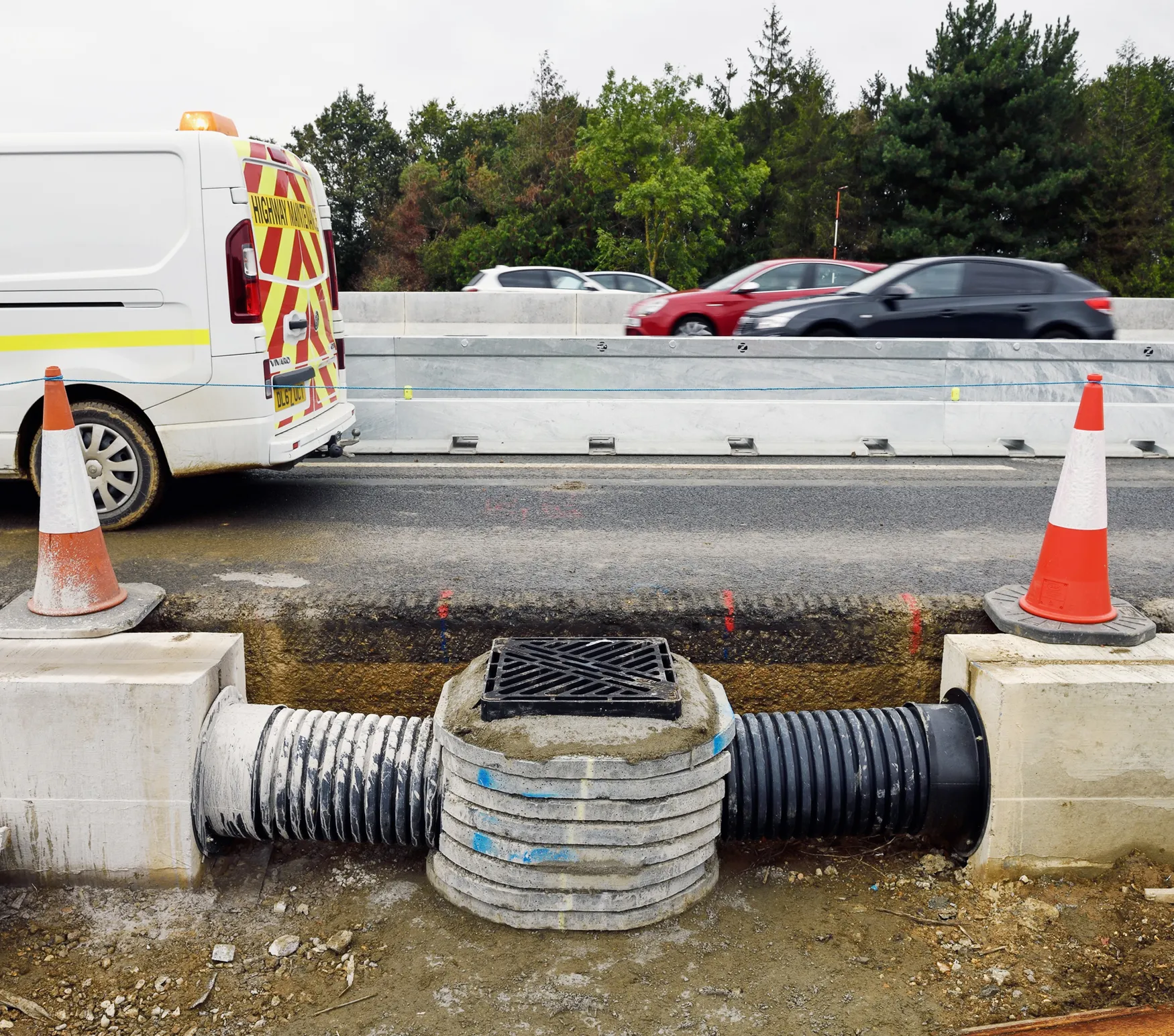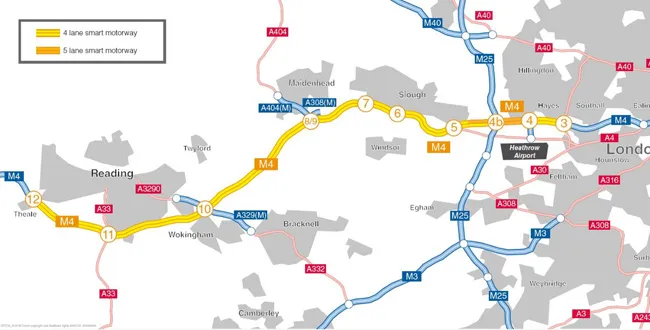
Over 3.2km of Ridgidrain and 1,000 “top hat” chamber base connectors from Polypipe under have been laid under an M4 motorway project in the UK.
Highways England is investing US$1.1 billion to create a “smart” section of the M4 motorway near London. A joint venture between Balfour Beatty and VINCI subsidiaries VINCI Grands Projets and Taylor Woodrow is delivering the upgrades, including widening the motorway from three to four lanes, rebuilding 13 major structures and deploying active traffic management technologies.
The joint venture started drainage upgrade work in October 2018. It used Ridgidrain pipe is a non-pressure surface water and subsurface water structured-wall carrier drain system. It is manufactured to nominal stiffness SN6 and has a high crush-resistance and strength-to-weight ratio. This makes it ideal for stormwater applications where high traffic loads are expected. Integral sockets for easy pipe alignment make installation rapid and straightforward, says the manufacturer, Polypipe Civils and Infrastructure - one of Europe’s largest manufacturers of plastic piping systems.
“Ridgidrain allows for pipe sections to be cut to length to meet onsite requirements without affecting pipe integrity or the ability to link it with the other components of the motorway’s surface water management system,” says Guy Miller, a Taylor Woodrow engineer.
Plain-ended pipes are available in diameters between 100-600mm and internally-socketed versions from 400-900mm. Ridgidrain is the first twinwall surface water drainage system with Highways Authority Product Approval Scheme (HAPAS) up to diameters of 900mm.
When connecting the plastic subsurface network with concrete drainage elements on the surface of the motorway, the bespoke flange “top hat” chamber base connectors act as inlets and conduits for the slip-formed concrete slot drains sited along the central reservation, says John Moss, business development director, with Polypipe Civils.
Polypipe is also providing a combination of Ridgidrain and “top hat” connectors with bespoke flange connections for the next phase of the project. This involves installing surface water drainage along the grass verges flanking the carriageways.
The M4 smart motorway works are due to finish in 2022.







